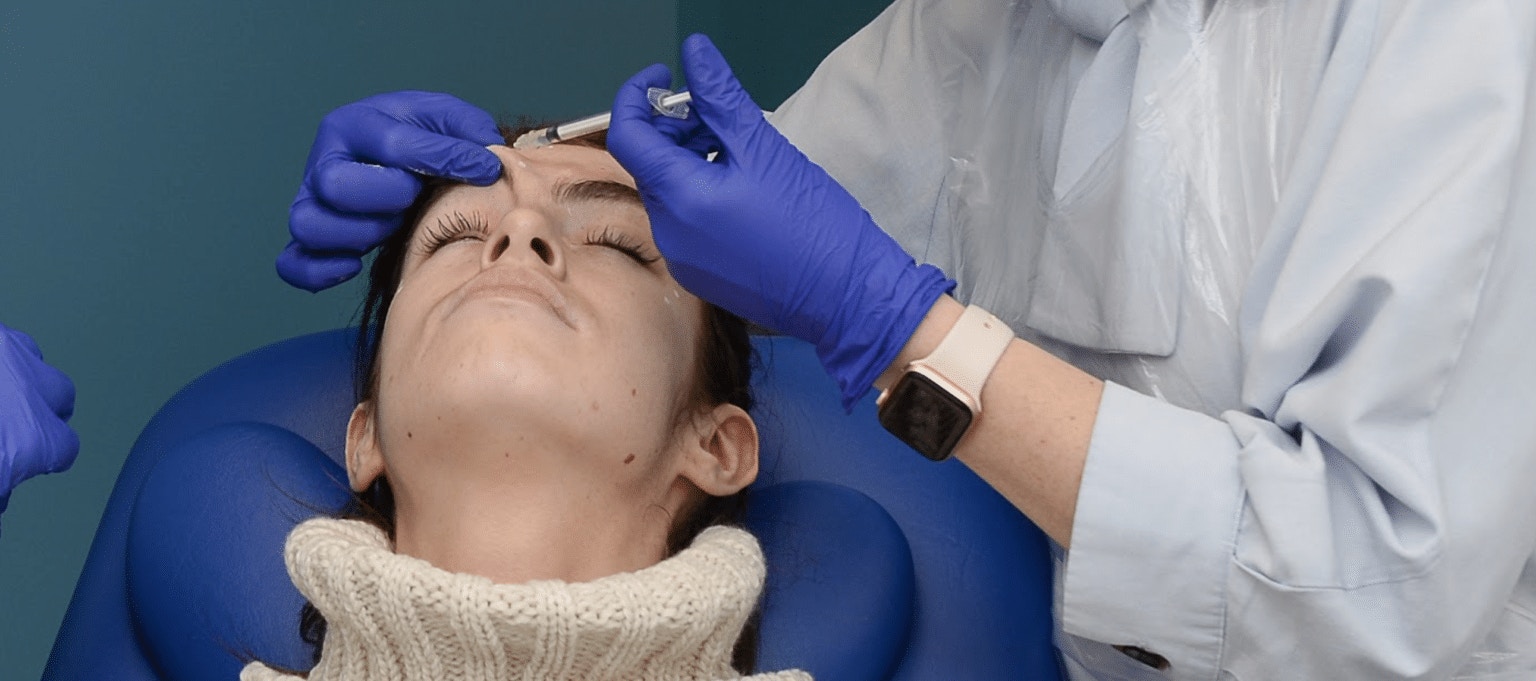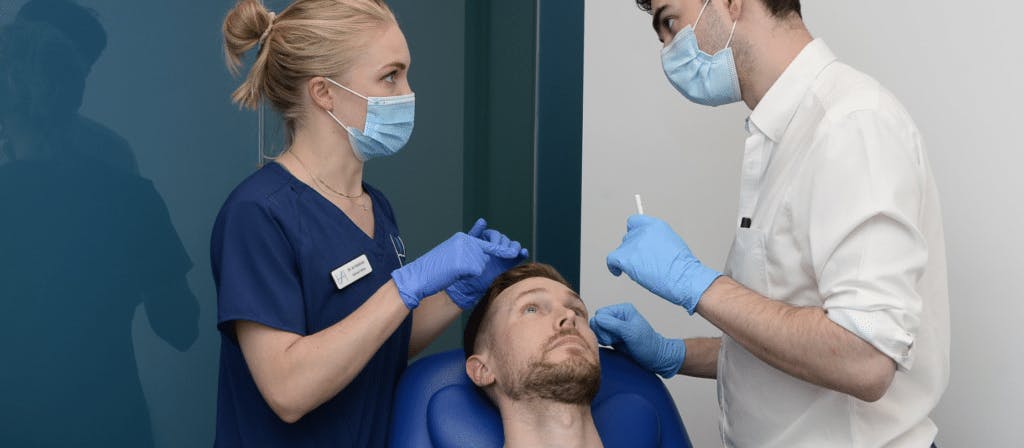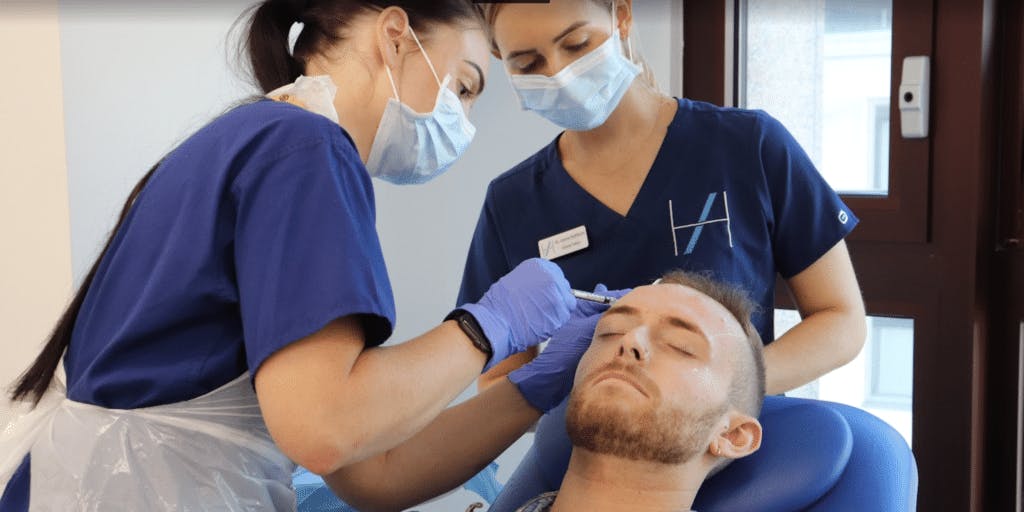Expert Advice On Treating Forehead Lines

Upper face wrinkle reduction – treating forehead lines – is one of the most popular and seemingly straightforward aesthetics procedures. But do you know when to use filler and when to use botulinum toxin to smooth those fine lines?
Despite being a fairly commonplace treatment area, it still requires in-depth anatomical knowledge, solid injection technique and good product selection.
Here some of our senior clinical trainers share their expert advice on treating forehead lines. This will help to ensure you master this cornerstone service and can be saved for future reference via the Harley Academy Instagram page.

RESPECT THE ANATOMY, SKIN QUALITY AND CONSIDER ONLY TREATING THE FROWN
Dr Kalpna Pindolia, director of education at Harley Academy, aesthetics specialist at STORY Marylebone.
If you’re treating the forehead with toxin, treat the frown too. Don’t treat the forehead, if this is not the issue area, particularly if there are risk factors for ptosis, such as hyperactivity or hooded eyelids.
Treating forehead lines with toxin impacts brow shape, so consider this when planning your pattern of injecting.
Static lines will be poorly managed here, which means you need to keep your patient’s expectations realistic or offer good alternatives
Consider your patient’s skin quality too. They may also benefit from good sun protection, use of retinol and microneedling courses.
Using filler in the forehead is an advanced medical aesthetics technique. It’s a risky area to treat, so do not attempt it as a novice. The use of cross-linked skin boosters should also be carefully considered in the forehead due to the potential for vascular occlusion.
GOOD PATIENT SELECTION IS KEY
Dr Raquel Amado, senior clinical trainer at Harley Academy; medical facial aesthetics expert and skin rejuvenation specialist.
My top tip for successfully treating forehead lines is good patient selection. If a patient has a low set of eyebrows, eyelid skin laxity and/or a hyperactive frontalis, they have a high risk of brow ptosis and I would not treat their forehead lines with botox.
Other treatments like non-cross-linked skin boosters, microneedling, maybe some fillers, if you have the experience and training for it, as well as medical grade skincare are good alternatives.

BE CLEAR ON RISKS AND OFFER A REVIEW – DON'T OVER-TREAT
Lorraine Guinan, nurse prescriber, senior clinical trainer at Harley Academy and aesthetic medicine specialist at Imagination Aesthetics
Botox is a common treatment for forehead lines but does not come without its risks. Try to keep frontalis injection points high and never chase low frontalis lines.
Be very clear about the risks and under-promise on the results. Offer patients a review rather than over-treating at initial treatment.
I often suggest 12-18 months of regular Botox before considering filler to this area. Personally, I don’t like to offer filler to the frontalis area due to the risks.
I find that patients can often get a good result when treating forehead lines with a combination of Botox and skin treatments such as microneedling and non-cross-linked skin boosters.
MASTER BOTOX AND FILLER TREATMENTS
As you can see, when it comes to treating forehead lines with toxin, importance is placed on two key areas: the frontalis and glabellar complex. This is where anatomical knowledge, patient selection and knowing which treatment is appropriate is crucial. This becomes very important if considering the use of cross linked fillers, particularly considering the vasculature and risk of occlusion. And this is before we’ve even got to the injecting technique!
It is vital to consider the benefits and risks of treatment. This includes the holistic approach, where combined treatment addressing skin quality can safely address concerns. This may take longer to yield results, but is usually safer!
What patients may deem a “simple” treatment actually requires a high level of education and knowledge to perform safely and successfully.

AESTHETIC MEDICINE TRAINING
This is why the Level 7 Diploma in Botox and Dermal Fillers covers each of these aspects in-depth and so much more. Not only do you, as an injector, need to know all these areas inside out in theory – you also need thorough practical experience.
Facial aesthetic work that involves injecting can be scary, initially. Especially when you’re dealing with a real life patient, not a mannequin. This is why we developed the Level 7 to include hands-on, confidence-building mentored injecting.
With a standard equivalent to a Master’s degree, this leading medical aesthetics training course is designed to make you a safe, ethical and confident injector. Knowing you have achieved this level of learning also provides reassurance to your patients. This makes it a valuable marketing tool for your skills!
Furthermore, the one-on-one mentoring sessions that form part of your Level 7 allow you to receive real-world insider tips – like those above – about any area you have questions on.
Please note that all our aesthetics training courses are only open to healthcare professionals – licensed doctors, dentists, nurses and midwives.
If you’d like more information, simply download our latest course prospectus. Alternatively, our head of student recruitment, Deneal Basi, would be happy to discuss your needs and talk you through your best options. You can book a call with him online.
All information correct at the time of publication
Download our full prospectus
Browse all our injectables, dermal fillers and cosmetic dermatology courses in one document
By submitting this form, you agree to receive marketing about our products, events, promotions and exclusive content. Consent is not a condition of purchase, and no purchase is necessary. Message frequency varies. View our Privacy Policy and Terms & Conditions
Attend our FREE open evening
If you're not sure which course is right for you, let us help
Join us online or in-person at our free open evening to learn more
Our Partners














STAY INFORMED
Sign up to receive industry news, careers advice, special offers and information on Harley Academy courses and services

